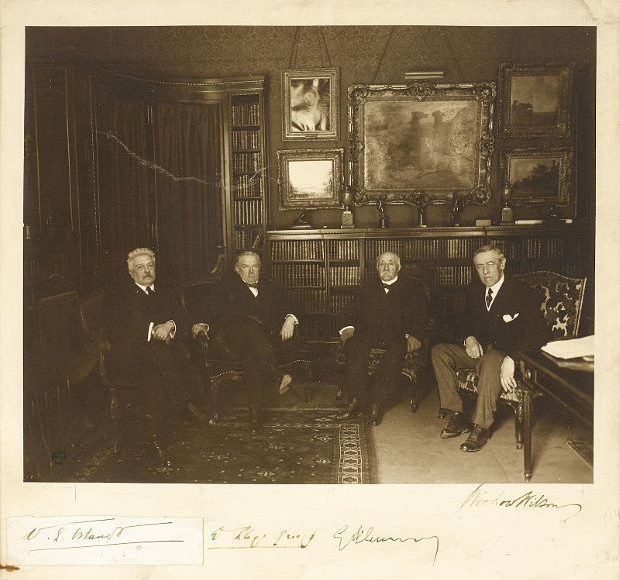January 18 in History
1919 – World War I: The Paris Peace Conference opens in Versailles, France
The Paris Peace Conference was a set of formal and informal diplomatic meetings in 1919 and 1920 after the end of World War I, in which the victorious Allies set the peace terms for the defeated Central Powers. Dominated by the leaders of Britain, France, the United States and Italy, the conference resulted in five treaties that rearranged the maps of Europe and parts of Asia, Africa and the Pacific Islands, and also imposed financial penalties. Germany, Austria-Hungary, Turkey and the other losing nations were not given a voice in the deliberations; this later gave rise to political resentments that lasted for decades. The arrangements made by the conference are considered one of the great watersheds of 20th-century geopolitical history.
The conference involved diplomats from 32 countries and nationalities. Its major decisions were the creation of the League of Nations and the five peace treaties with the defeated states. The main arrangements agreed upon in the treaties were, among others, the transition of German and Ottoman overseas possessions as ‘mandates’ from the hands of these countries chiefly into the hands of Britain and France; the imposition of reparations upon Germany; and the drawing of new national boundaries, sometimes involving plebiscites, to reflect ethnic boundaries more closely.
US President Woodrow Wilson in 1917 commissioned a group of about 150 academics to research topics likely to arise in diplomatic talks on the European stage and to develop a set of principles to be used for the peace negotiations to end World War I. The results of this research were summarized in the so-called Fourteen Points document that became the basis for the terms of the German surrender during the conference, as it had earlier been the basis of the German government’s negotiations in the Armistice of November 11, 1918.
The main result of the conference was the Treaty of Versailles with Germany; Article 231 of that treaty placed the whole guilt for the war on “the aggression of Germany and her allies”. That provision proved very humiliating for German leaders, armies and citizens alike, and set the stage for the expensive reparations that Germany was intended to pay (only a small portion of which had been delivered when it stopped paying after 1931). The five great powers at that time, France, Britain, Italy, Japan and the United States, controlled the Conference. The ‘Big Four’ leaders were French Prime Minister Georges Clemenceau, British Prime Minister David Lloyd George, US President Woodrow Wilson, and Italian Prime Minister Vittorio Emanuele Orlando. Together with teams of diplomats and jurists, they met informally 145 times and agreed upon all major decisions before they were ratified.
The conference began on this day in 1919. With respect to its end, Professor Michael Neiberg noted, “Although the senior statesmen stopped working personally on the conference in June 1919, the formal peace process did not really end until July 1923, when the Treaty of Lausanne was signed.” The entire process is often referred to as the “Versailles Conference”, although only the signing of the first treaty took place in the historic palace; the negotiations occurred at the Quai d’Orsay in Paris.
–Wikipedia
Photo Caption – Photograph Signed by the ‘Big Four’ of the Versailles Peace Conference in Paris, 1919. Signed in lower margin – WOODROW WILSON (‘Woodrow Wilson’) as President of the United States, GEORGES CLEMENCEAU (‘G Clemenceau’) as Premier of France, DAVID LLOYD GEORGE (‘D Lloyd George’) as Prime Minister of the United Kingdom, and VITTORIO ORLANDO (‘V.E. Orlando’) as Prime Minister of Italy – Public Domain



Comments are closed, but trackbacks and pingbacks are open.